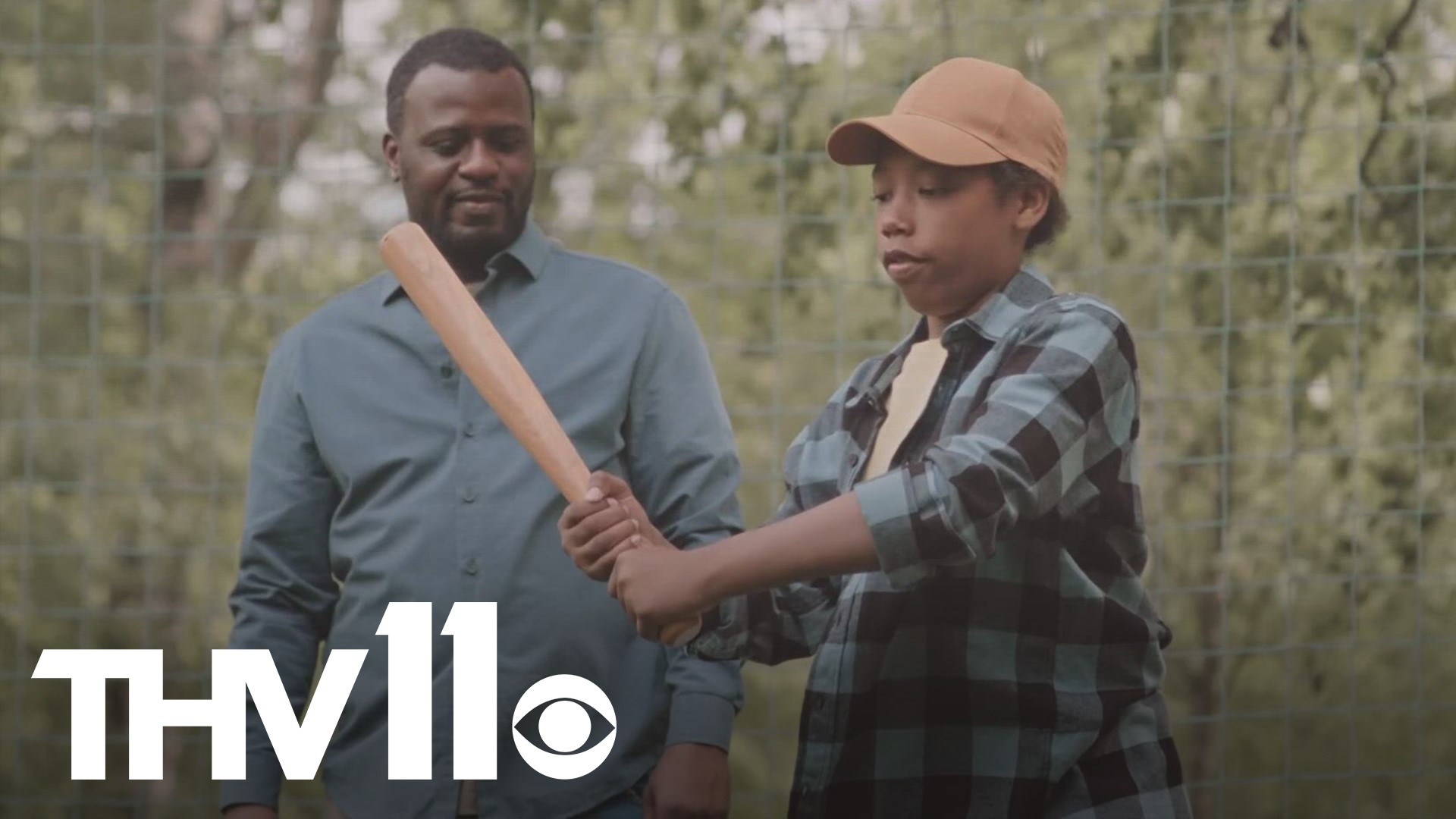LITTLE ROCK, Ark. — Last year, the Houston Astros took down the Philadelphia Phillies in the World Series. It was also the first time since 1950, shortly after Jackie Robinson broke the color barrier, that there were no African Americans on either team in the World Series.
This isn't to say there aren't Black athletes playing baseball— in fact, roughly 40% of the MLB consists of players of color.
However, the majority of those players are from the Caribbean and are often of Afro-Latino descent, hailing from countries like Cuba or the Dominican Republic.
When it comes to Black players born in the United States, the MLB Racial and Gender Report Card showed that less than only around 6% of MLB players are of African American descent, the lowest since 1991.
So what's behind the decline of the sport among African Americans?
Well, a lot of it may start at the youth level, with cost being a big factor.
Just ask Shantay Rice. Her son Rylin Blair, who's 19 now and playing in college, spent his youth baseball years playing the sport in Pine Bluff.
"You know, there are a lot of people in our hometown, believe it or not, they couldn't afford to 60 to $100, just for the summer ball. So that's the first I think deterrent with baseball with African Americans," Rice said.
That cost barrier is something seen by experts as well. Dr. Kevin Kendrick played college baseball at UAPB. but these days he works with student-athletes at Florida International University as an associate athletic director and is an advocate for getting more African American youth into baseball.
"Another layer is the financial resources. If you look at the backgrounds of the individuals who participate. They just don't have it. Therefore you have numbers drop off dramatically, " Kendrick said.
Not just cost, but that dominance of other sports is something Rylin said he saw first-hand. He played high school baseball at Pulaski Academy.
As he grew older, he noticed the decline of teammates who looked like him.
"I know, especially coming from Pine Bluff because the league I played was called Pine Bluff Northern, it was majority black. And going from that to PA where it's really just me, and maybe one or two other people it was it was a drastic change. But it took a little bit of getting used to, but I mean, it's still baseball," he explained.
"It's still baseball" may be another part of the problem— at least when it comes to getting to the big leagues.
Unlike Division I football and basketball programs, DI baseball programs can only offer a maximum of 11.7 athletic scholarships, to be divided up among a maximum of 27 players. Therefore, minimizing scholarship opportunities for athletes and reasons to continue playing for financial reasons.
Minor league players also don't see the big bucks instantly.
"In baseball, you get drafted and you may not see a player, you know, show up to major league baseball for another four or five, maybe six years. Obviously, you have minor league single Double-A and triple-A ball. Before you even get to that, you have levels of independent ball." Kendrick added.
It's an often lengthy process that's not usually the case in other sports where instead big-name players go pro quick and get deals worth big money.
"We've found sports like football and basketball unfortunate We've taught our men and women to find those sports more attractive because of resources, instant gratification, and that's where we're supposed to be, " he said.
So what can be done to encourage more African American kids to fall in love with "America's pastime"? That's where people like Terrell Brown, come in.
A current baseball coach at Jacksonville High, he has years of youth coaching experience and has tried to make accommodations for upcoming athletes who struggle with affording to participate.
"When I gave lessons sometimes I had to cut my rate down. You want those guys to succeed. It's not all about the money but when the building has a certain fee you have to abide by that fee. but I'd still cut it down. Sometimes I'd have to pay out of pocket," Brown explained.
Outside of lowering costs, he said that having representation on the coaching side helps increase diversity
" I think it starts with getting black coaches, and not only funding just for black kids but for everybody. and just trying to lead the black community in baseball," he added.
Rylin has had some of his own and hopes to inspire more kids to stick with baseball.
"So just think about the bigger picture. I mean, you can't wake up one day and say you want to be successful and be successful by the end of the day. I mean, like, it's gonna take time, you know, you gotta go, put in work countless hours. And eventually, one day, you'll wake up and be well where you planned on being," he described.
"Opportunities are available. We just have to stick with it and be consistent, it's anyone's game, If you stick with you can be anything you want to be. It's your dream," Shantay said.

